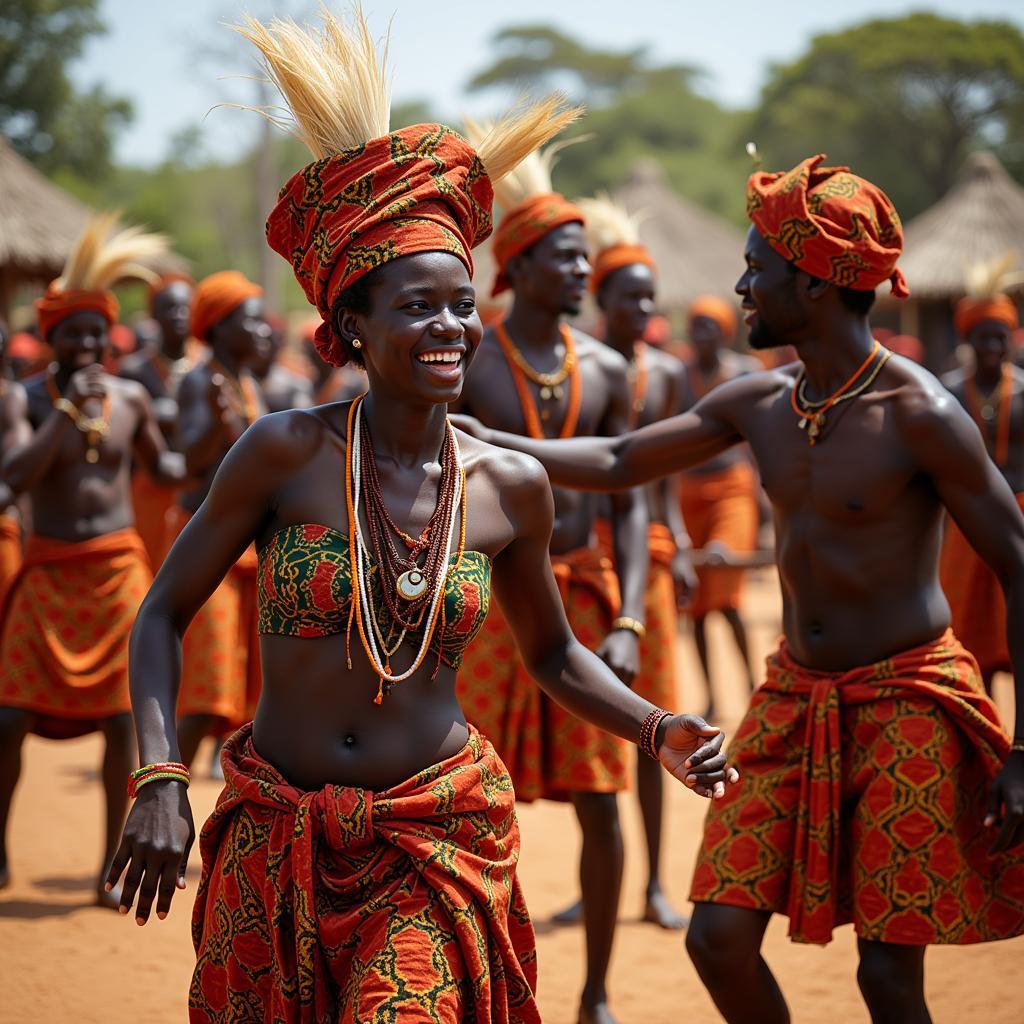The Fascinating World of African Gazelle Mating
African gazelles are known for their graceful movements and striking beauty, but their mating rituals are equally captivating. From elaborate displays of courtship to fierce competition for dominance, these animals exhibit a fascinating blend of instinct and social behavior. Understanding the complexities of gazelle mating can provide valuable insights into the intricate dynamics of the African savanna.
What is African Gazelle Mating?
African Gazelle Mating is a crucial part of their life cycle, ensuring the survival of their species. It involves a series of complex behaviors, including courtship rituals, dominance battles, and the act of copulation. These behaviors are influenced by a combination of factors, such as hormones, environmental conditions, and social dynamics within the herd.
The Courtship Dance: A Symphony of Movement
The courtship rituals of African gazelles are captivating to watch. Males often engage in elaborate displays to attract females, showcasing their physical prowess and genetic fitness. These displays may involve:
- Stotting: This involves leaping high into the air with all four legs extended, sometimes accompanied by a loud snort or bleat. Stotting serves as a signal to potential mates, indicating the male’s strength and vitality.
- Flehmen: This involves curling the upper lip back, exposing the vomeronasal organ, which detects pheromones. This allows males to assess a female’s receptivity and reproductive status.
- Chasing: Males will often chase females around, attempting to gain their attention and demonstrate their persistence. This can involve a combination of running, leaping, and head-bobbing.
The Battle for Dominance: Strength and Strategy
Competition for mates is fierce among male gazelles, and they often engage in intense dominance battles. These battles are not always physical but can involve strategic maneuvering, intimidation, and displays of strength.
- Head-butting: Males may clash heads to assert dominance, attempting to knock their rivals off balance.
- Neck-wrestling: This involves grappling with each other, using their necks and shoulders to gain leverage.
- Vocalizations: Deep roars and guttural bellows are used to intimidate rivals and attract females.
The Act of Copulation: A Brief Interlude
Once a female gazelle is receptive, the act of copulation is relatively brief and occurs quickly. After copulation, the female will usually leave the male and return to the herd, while the male may stay and attempt to defend his territory from other males.
Why is African Gazelle Mating Important?
African gazelle mating plays a vital role in the ecosystem:
- Species Survival: Successful mating ensures the continuation of the species.
- Genetic Diversity: Different mating pairs contribute to genetic diversity, helping the population adapt to changing environmental conditions.
- Population Control: Mating patterns, including seasonal breeding, help regulate population sizes and maintain a healthy balance within the ecosystem.
Expert Insights on Gazelle Mating
“The mating rituals of African gazelles are a fascinating example of how natural selection drives the evolution of complex behaviors,” says Dr. Sarah Jones, a wildlife biologist specializing in ungulates. “These behaviors help gazelles find suitable mates, reproduce successfully, and ensure the survival of their offspring.”
“Observing gazelle mating in the wild is a privilege,” notes Dr. David Patel, a renowned ethologist. “It’s a window into the delicate balance of nature, where instinct and social dynamics intertwine to create a captivating spectacle.”
Frequently Asked Questions:
- What is the mating season for African gazelles? Mating seasons vary depending on the species and geographical location, but generally occur during periods of abundant food and favorable weather conditions.
- How long does a gazelle gestation period last? Gestation periods also vary among species, but typically range from 160 to 190 days.
- What are the threats to gazelle mating success? Threats include habitat loss, hunting, climate change, and competition from other species.
Conclusion
African gazelle mating is a complex and captivating process that highlights the intricate relationships between behavior, ecology, and evolution. Understanding these rituals is crucial for conserving gazelle populations and ensuring the continued health and diversity of the African savanna.



